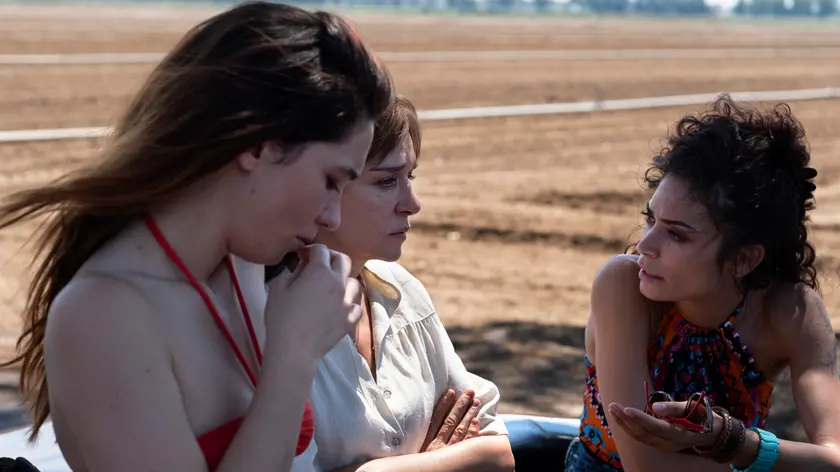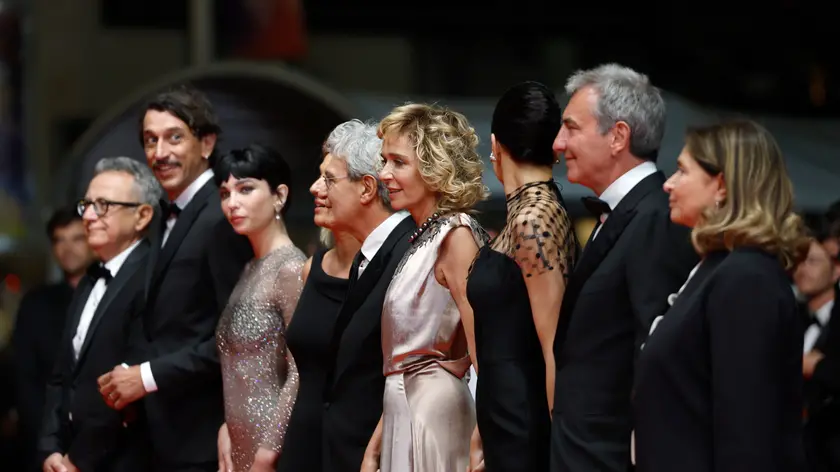
Martone’s Wisdom in Viewing the World Like Goliarda
The only Italian film competing at Cannes, “Fuori” recounts the prison experience of “The Art of Joy”. Valeria Golino delivers a superb performance.
By Savino Threedays | May 21, 2025
Premiering at Cannes as Italy’s sole contender, Mario Martone’s latest film, Fuori (Outside), masterfully explores the intricate interplay between confinement and liberation, self and society. Arriving in cinemas on May 22, the film delves into the profound psychological and societal boundaries experienced by its protagonist, Goliarda Sapienza, brought to compelling life by lead actress Valeria Golino. Martone’s nuanced direction adeptly navigates these complex dualities, offering a poignant reflection on human resilience amidst societal pressures.
Set in the 1980s, the narrative centers on Sapienza, the celebrated author of The Art of Joy, who finds herself incarcerated for a brief period (five days in reality) after stealing jewelry from a friend’s home. Initially met with suspicion and isolation by fellow inmates who perceive her as an outsider due to her demeanor and attire, Goliarda gradually earns their acceptance. Her ability to respond to aggression with a raw authenticity akin to their own allows her to penetrate a world characterized by extreme yet genuine emotions. She forms significant bonds, particularly with Roberta (Matilda De Angelis) and Barbara (Elodie), becoming integrated into their unconventional and generous circles.

Upon her release, Goliarda confronts a daunting future. Deemed too “old” for domestic or cleaning work, too inexperienced for other professions, and too compromised to be rehabilitated by Rome’s elite society, whose norms and expectations she defied, she finds herself adrift. Her sole solace and genuine connection lies with Roberta, who also struggles to adapt to life outside prison walls. Goliarda never questions the nature of Roberta’s past actions that led to her detention, accepting her for who she is.
Crucially, it is through the companionship of Roberta and Barbara that Goliarda experiences a profound resurgence. Their presence, especially Roberta’s steadfast nurturing of the writer’s talent and her sincere human closeness, even within her unconventional and possibly manipulative ways, breathes new life into Goliarda, igniting her desire to write once more.
Valeria Golino’s performance as Goliarda Sapienza is commendable, subtly mastering the psychological “inside” and “outside” dimensions of the character. This nuanced portrayal is informed by Golino’s familiarity with Sapienza, having previously directed the television series L’arte della gioia, based on Sapienza’s celebrated novel.

Martone’s direction meticulously reconstructs the 1980s, allowing the visuals to convey immense expressive power. The scenes within the women’s prison are particularly striking, depicting both collective protests and individual struggles. The pervasive disorientation of these women, for whom life inside prison, though difficult, proves more intelligible and less cynical than life outside, is intensely captured. Goliarda, who always found life “outside” challenging, becomes even more fragmented, yet paradoxically revitalized with a renewed impetus to write.
Both Martone and co-screenwriter Ippolita Di Majo, like Golino, have extensively studied the Sicilian author. Martone previously staged Il filo di mezzogiorno (1969), a theatrical adaptation of Sapienza’s second book chronicling her psychoanalytic therapy. Sapienza embarked on her writing career after acting, and within the cinematic milieu, she met her first husband, Citto Maselli, with whom she was connected for 18 years, and later the writer and actor Angelo Pellegrino, who is also depicted in the film. Following her prison experience, Sapienza penned L’università di Rebibbia and Le certezze del dubbio, reflecting on how “civil” perils in external society were no less dangerous than those within confinement.
Martone and Di Majo adeptly extend Sapienza’s text across time, aligning with the character’s emotional journey. A contemporary resonance emerges when Goliarda and Roberta meet at Termini Station, reminiscent of the cement pillars in Martone’s 2010 film Noi credevamo, which revisited the Risorgimento based on Anna Banti’s text. The film presents a Rome of jovial and inviting beauty, vibrant and open, diverging from Naples, which in Martone’s previous works (such as L’amore molesto, Qui rido io, Sindaco del Rione Sanità, and Nostalgia) has often been depicted as a complex, almost divine entity embodying both allure and degradation. Martone’s cinema has consistently been enriched by magnificent Neapolitan figures, including the mathematician Renato Caccioppoli, born from the director’s collaboration with another powerful Neapolitan figure, Fabrizia Ramondino.
#CannesFilmFestival #ItalianCinema #MarioMartone #ValeriaGolino #GoliardaSapienza
Inspiration source:Ilsole24ore.com